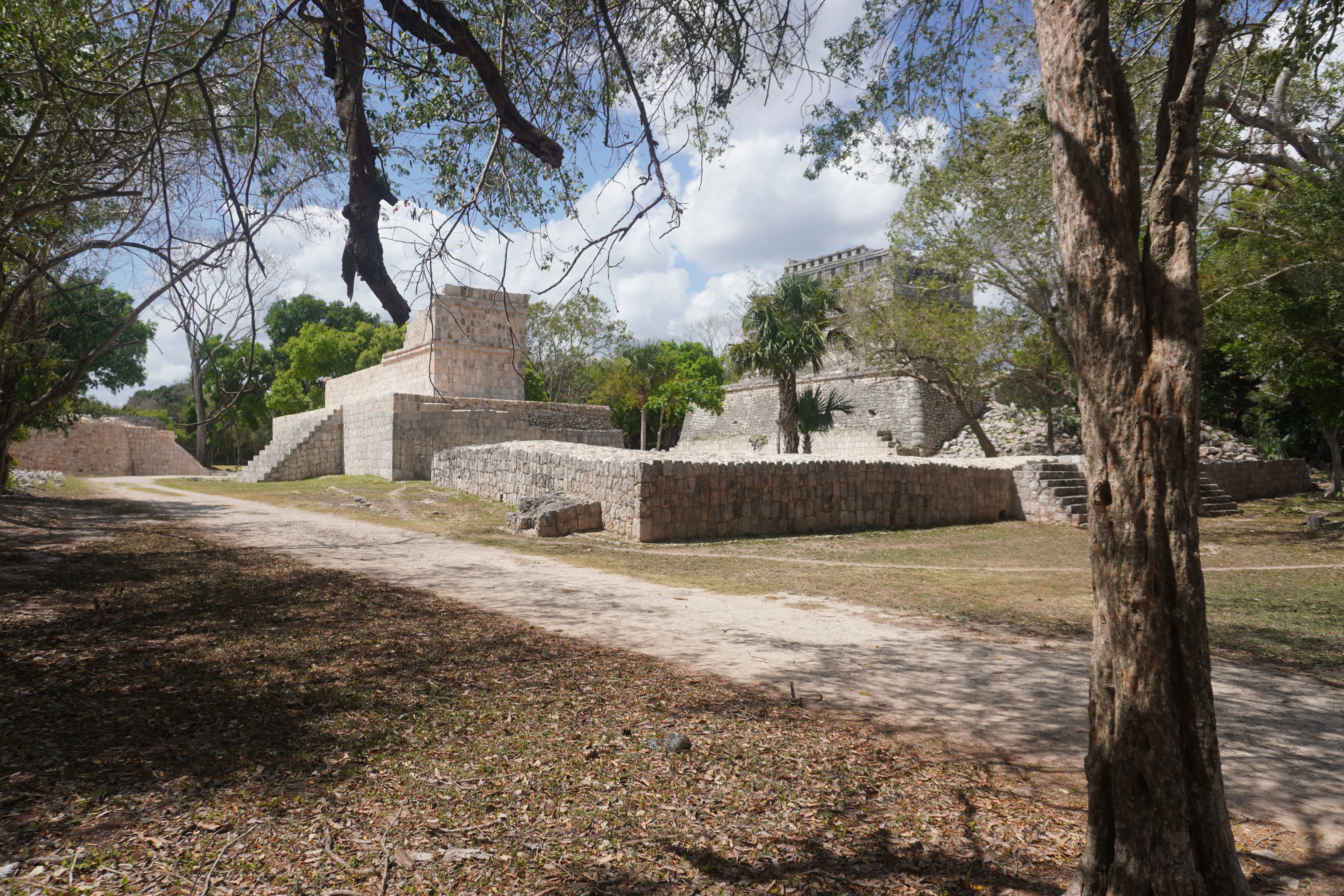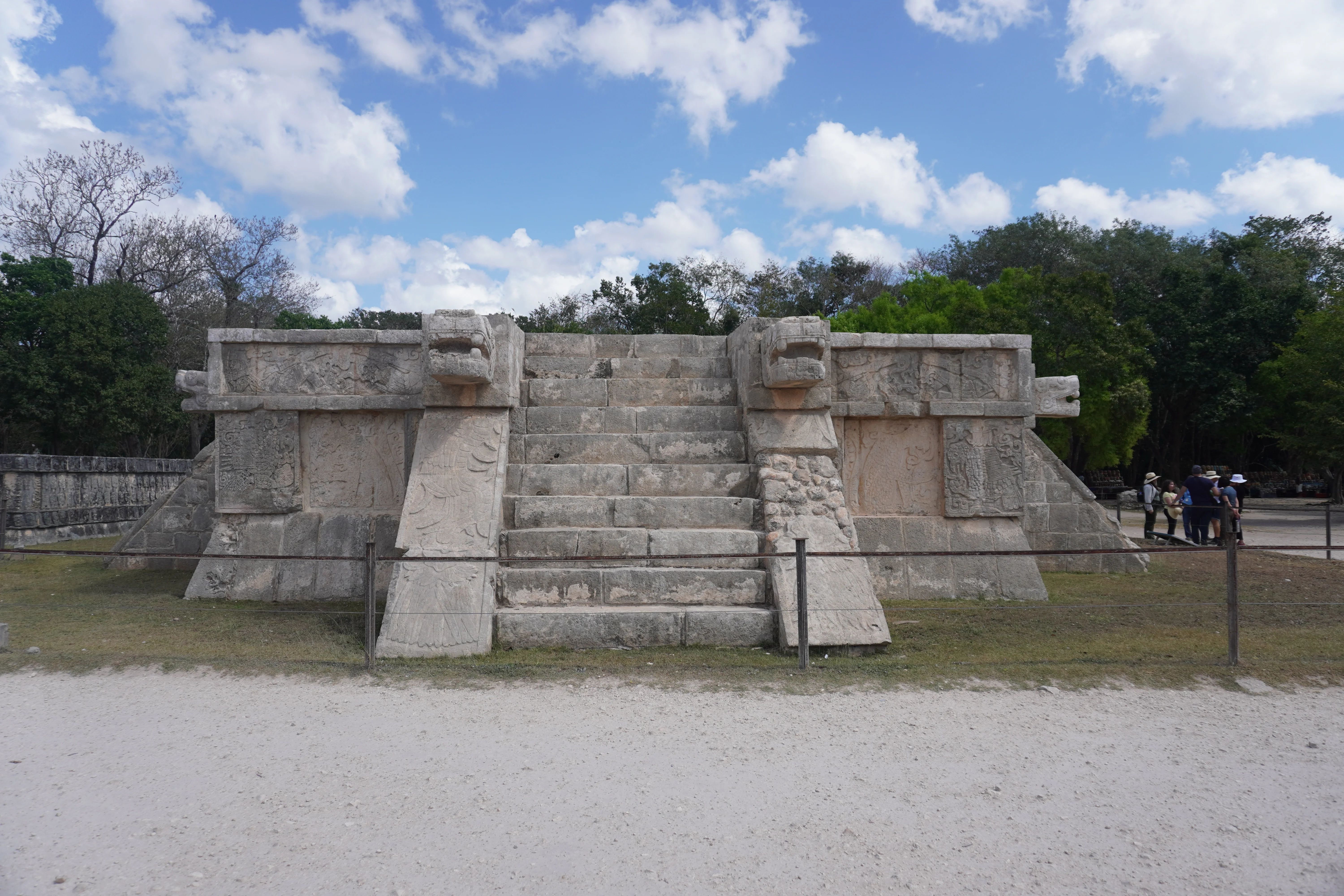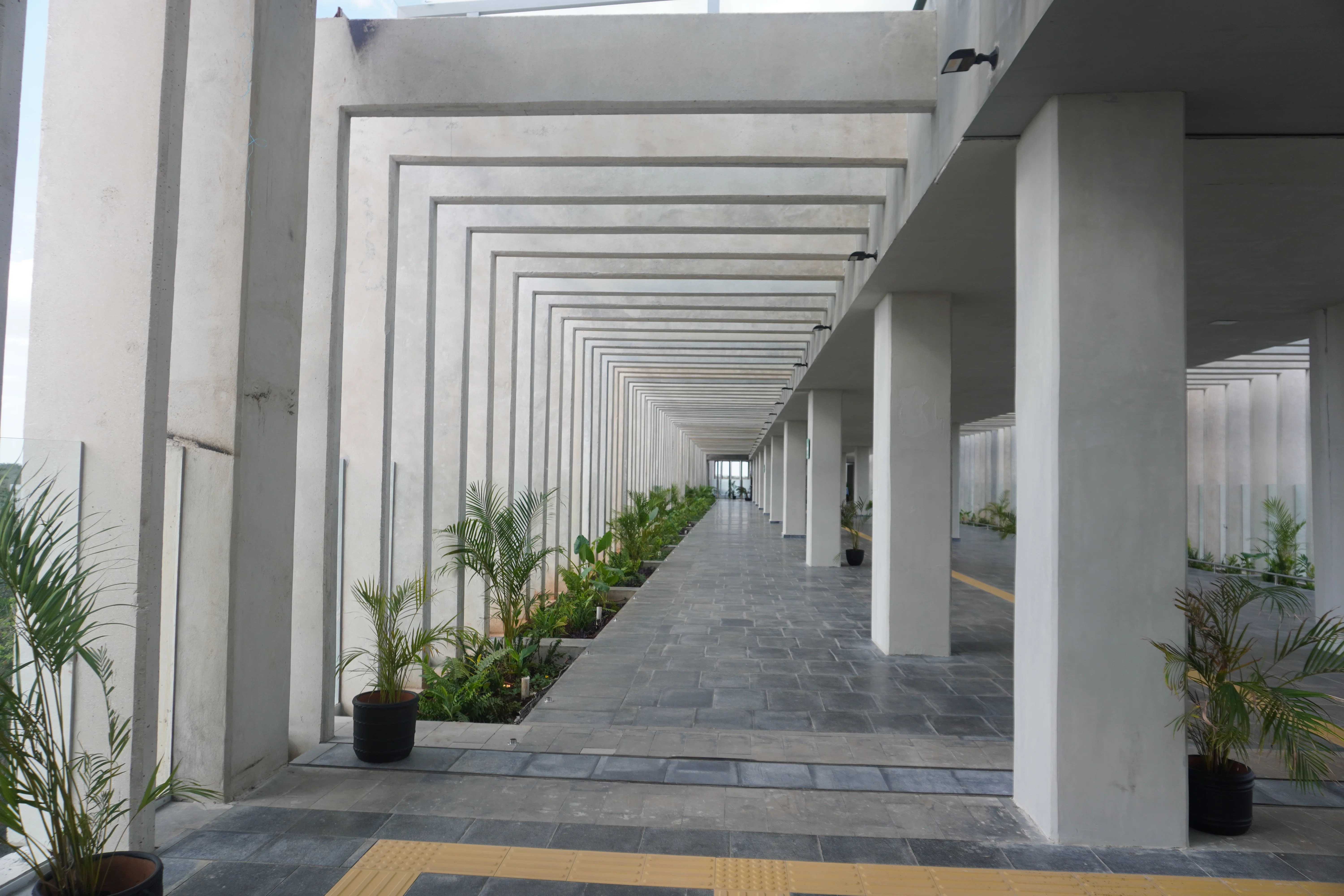The Maya Train brings Chichén Itzá within easy reach for those exploring Mexico’s Yucatán Peninsula. This ancient Maya city is a UNESCO World Heritage site and one of the Seven Wonders of the World, making it an essential stop on any Yucatán adventure.

If you're traveling on the Maya Train, you're in for an adventure! This blog will guide you on how to discover Chichen Itza on the Maya Train.
A Glimpse into Chichén Itzá’s History:
Chichén Itzá’s history is a fascinating glimpse into the sophistication of the Maya civilization. Established around the 6th century AD, it evolved as a central hub of Maya society, showcasing architectural, cultural, and scientific achievements. Influenced by neighboring cultures like the Toltecs, the site displays a unique blend of styles, particularly in structures like the Temple of Warriors. Its strategic location by cenotes—natural wells vital for water—allowed it to thrive. The name “Chichén Itzá,” translating to "at the mouth of the well of the Itza," highlights the importance of these water sources in Maya society, both for sustenance and spiritual rituals.
The city’s layout, featuring astronomically aligned buildings and complex ceremonial spaces, reflects the Maya’s knowledge of the cosmos and their structured social hierarchy. Chichén Itzá served as a center for trade, religion, and administration, with monuments dedicated to gods, astronomy, and their calendar system.
Highlights of Chichén Itzá:

Temple of Kukulkan: This iconic 30-meter pyramid was constructed in honor of Kukulkan, the feathered serpent god. Its design, which includes 365 steps (matching the days of the year), highlights the Maya’s deep understanding of time and the calendar. During the equinoxes, a fascinating optical illusion occurs when the shadow of the pyramid creates the appearance of a serpent slithering down its stairs. This unique feature is a testament to the Maya’s astronomical knowledge and their alignment of architecture with celestial events.
The Great Ball Court: As the largest ball court in Mesoamerica, this massive structure was used for the ritual ballgame, a game that had both political and religious significance. The court, measuring 168 meters in length, was surrounded by high walls, with stone rings through which players would aim to pass a heavy rubber ball. The acoustics of the court are extraordinary, designed so that a sound as subtle as a clap can be heard clearly from one end to the other. This architectural feature reflects the Maya’s mastery of acoustics, further enhancing the spiritual experience of the game.

Temple of the Warriors and the Group of a Thousand Columns: The Temple of the Warriors stands as a testament to Chichén Itzá's military and political strength. The temple is supported by hundreds of columns, many of which are adorned with intricate carvings of warriors. This structure, along with the surrounding Group of a Thousand Columns, likely served as a gathering space for important events, including political meetings and ceremonial rituals. The carvings serve as a visual representation of the city’s military might, as well as the social and political hierarchy that governed it.

Sacred Cenote: The Sacred Cenote is a natural sinkhole that holds great spiritual significance for the Maya. It was considered a gateway to the underworld and was used for ceremonial offerings, including human sacrifices. Archaeological discoveries have uncovered valuable artifacts and human remains, which suggest that the cenote was used to appease the gods, particularly those associated with rain and fertility. The cenote’s role in Maya religious practices illustrates the deep connection the Maya had with water as both a physical and spiritual resource.
El Caracol (The Observatory): El Caracol, meaning “The Snail” due to its spiral staircase, was an astronomical observatory used by the Maya to study celestial movements. Its design allowed Maya astronomers to track the movements of Venus and other celestial bodies, which were integral to their calendar and religious ceremonies. This structure is a clear reflection of the Maya's sophisticated understanding of astronomy, as it aligns with specific astronomical events, allowing for precise measurements of time. It stands as one of the earliest examples of architecture designed specifically for scientific purposes.

Explore Chichén Itzá on the Maya Train:
Explore Chichén Itzá on the Maya Train in a very comfortable journey, with onboard amenities and a scenic route to Chichén Itzá. Information about the Maya civilization enhances the experience, making it ideal for both history enthusiasts and casual travelers.

For those that want to explore Chichén Itzá on the Maya Train, the station at the site itself is a gateway to exploring one of the most iconic archaeological locations in the world. The station is well-equipped to accommodate tourists, with easy access to both the ruins and other nearby attractions like cenotes and cultural landmarks. The convenience of this station makes it an ideal starting point for any exploration of the region
Additionally, there are various ticketing options for the train, with affordable fares starting at around $60 USD for a round trip from major cities like Cancun or Playa del Carmen. You can find the Maya Train prized from the main destinations below:
Maya Train Prices to Chichen Itza from Cancun Airport Maya Train Station (1 hr, 50 min):
Premier Class:
National Premier $715.50 MXN
International Premier $954.00 MXN
Tourist Class:
Special Tourist (60+) $224.00 MXN
Local Tourist $298.00 MXN
National Tourist $448.00 MXN
International Tourist $596.50 MXN
Maya Train Prices to Chichen Itza from Merida Teya Maya Train Station (1 hr, 20 min):
Premier Class:
National Premier $457.50 MXN
International Premier $610.00 MXN
Tourist Class:
Special Tourist (60+) $143.00 MXN
Local Tourist $190.50 MXN
National Tourist $286.50 MXN
International Tourist $381.50 MXN
Maya Train Prices to Chichen Itza from Izamal Maya Train Station (40 min):
Premier Class:
National Premier $260.50 MXN
International Premier $347.50 MXN
Tourist Class:
Special Tourist (60+) $81.50 MXN
Local Tourist $108.50 MXN
National Tourist $163.00 MXN
International Tourist $217.00 MXN
Maya Train Prices to Chichen Itza from Valladolid Maya Train Station (25 min):
Premier Class:
National Premier $149.00 MXN
International Premier $198.50 MXN
Tourist Class:
Special Tourist (60+) $46.50 MXN
Local Tourist $62.00 MXN
National Tourist $93.50 MXN
International Tourist $124.00 MXN
Maya Train Prices to Chichen Itza from Playa del Carmen Maya Train Station (3 hr, 24 min):
Premier Class:
National Premier $951.50 MXN
International Premier $1269.00 MXN
Tourist Class:
Special Tourist (60+) $298.00 MXN
Local Tourist $397.00 MXN
National Tourist $596.00 MXN
International Tourist $793.50 MXN
Maya Train Prices to Chichen Itza from Puerto Morelos Maya Train Station (2 hr, 57 min):
Premier Class:
National Premier $846.00 MXN
International Premier $1128.00 MXN
Tourist Class:
Special Tourist (60+) $264.50 MXN
Local Tourist $352.50 MXN
National Tourist $529.50 MXN
International Tourist $705.00 MXN
Maya Train Prices to Chichen Itza from San Francisco de Campeche Maya Train Station (3 hr, 41 min):
Premier Class:
National Premier $1146.00 MXN
International Premier $1528.50 MXN
Tourist Class:
Special Tourist (60+) $359.00 MXN
Local Tourist $477.50 MXN
National Tourist $718.00 MXN
International Tourist $955 MXN
Maya Train Prices to Chichen Itza from Palenque Maya Train Station (8 hr, 36 min):
Premier Class:
National Premier $2675.00 MXN
International Premier $3567.00 MXN
Tourist Class:
Special Tourist (60+) $837.50 MXN
Local Tourist $1094.50 MXN
National Tourist $1675.50 MXN
International Tourist $2229.50 MXN
Visiting Tips:
Visiting Chichén Itzá is an awe-inspiring experience, and to make the most of your trip, here are some valuable tips for visitors!
Best Times to Visit: Chichén Itzá can become quite crowded, especially during peak tourist seasons. To avoid the rush and experience the site in a more tranquil atmosphere, it’s best to arrive early in the morning or later in the afternoon. Not only will you avoid large crowds, but these times also provide cooler temperatures, which can make exploring much more comfortable. The midday heat in the Yucatán Peninsula can be intense, so it's advisable to plan accordingly. Visiting early also allows you to witness the site during the softer morning light, which enhances the beauty of the structures.
Guided Tours: While it’s possible to explore Chichén Itzá independently, joining a guided tour offers a richer experience. Knowledgeable guides provide deeper insights into the history, culture, and architectural significance of the site, helping you understand the intricate details and the deeper meanings behind the structures. With their expertise, you’ll learn about the Maya civilization’s complex social, political, and religious systems. A guide can also help you navigate the site more efficiently, ensuring you don’t miss any important landmarks. Many tours are available in multiple languages, so be sure to inquire about options that suit your needs.
Essentials for Your Visit: To ensure a comfortable and enjoyable visit, there are a few essentials to bring with you some essential items!
Water:
The weather in Chichén Itzá can be hot, so it’s important to stay hydrated throughout your visit.
Sunscreen: Protect your skin from the strong sun, especially during the middle of the day when the sun is at its peak.
Comfortable Shoes:
The site spans a large area, and you’ll be walking a lot, so wearing comfortable shoes is essential. Sneakers or walking sandals are ideal for exploring the various pyramids, temples, and other structures.
Hat and Sunglasses:
These will help protect you from the sun, as much of the site is open and exposed to the elements.
Evening Light and Sound Show "Noches de Kukulkan”:
For a completely different perspective of Chichén Itzá, don’t miss the Noches de Kukulkan light and sound show. Held in the evening, this show brings the ancient Maya city to life through dramatic lighting effects and captivating storytelling. As night falls, the structures, particularly the Temple of Kukulkan (El Castillo), are illuminated with colorful lights that highlight their majestic features. The show also incorporates elements of Maya mythology, history, and the importance of the site. It's an unforgettable experience that allows visitors to connect with the past in a way that is both visually stunning and informative. The show typically runs on select days and is highly recommended for those wanting to immerse themselves further into the mysteries of this ancient civilization.

These tips will help ensure that your visit to Chichén Itzá is as rewarding and enjoyable as possible. With its incredible history, stunning architecture, and cultural significance, Chichén Itzá offers an experience that will stay with you long after you’ve left.
Significance and Preservation of Chichén Itzá:
Chichén Itzá remains a cultural icon and a testament to the Maya civilization’s scientific and architectural achievements. Preservation efforts continue to protect this remarkable site for future generations, emphasizing visitor respect for its structures.

Chichén Itzá is more than an archaeological site; it’s a journey into Maya history, science, and spirituality. The Maya Train makes this journey more accessible, bringing visitors face-to-face with a civilization that continues to inspire awe. Whether you’re drawn by history or architecture, Chichén Itzá promises an unforgettable experience.











